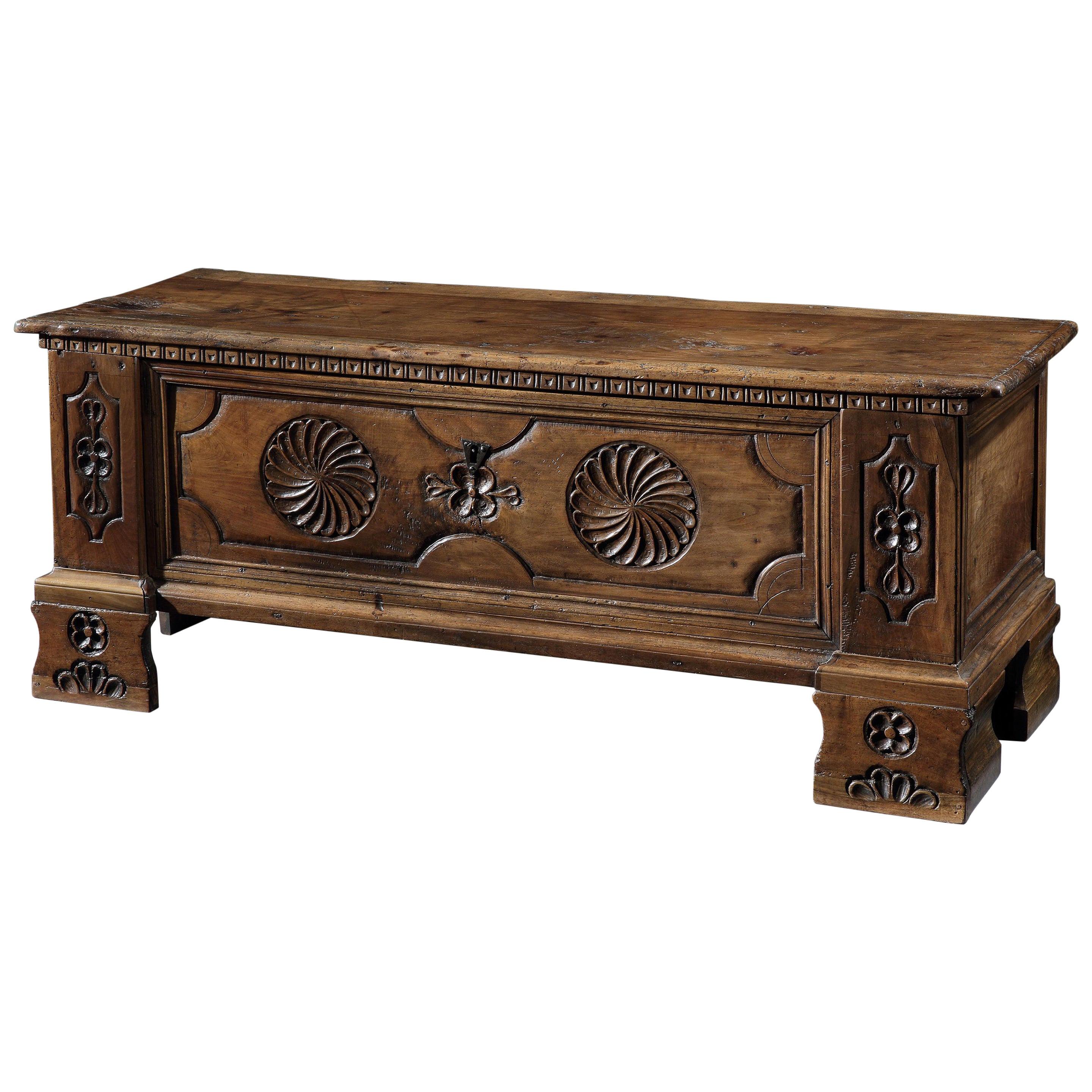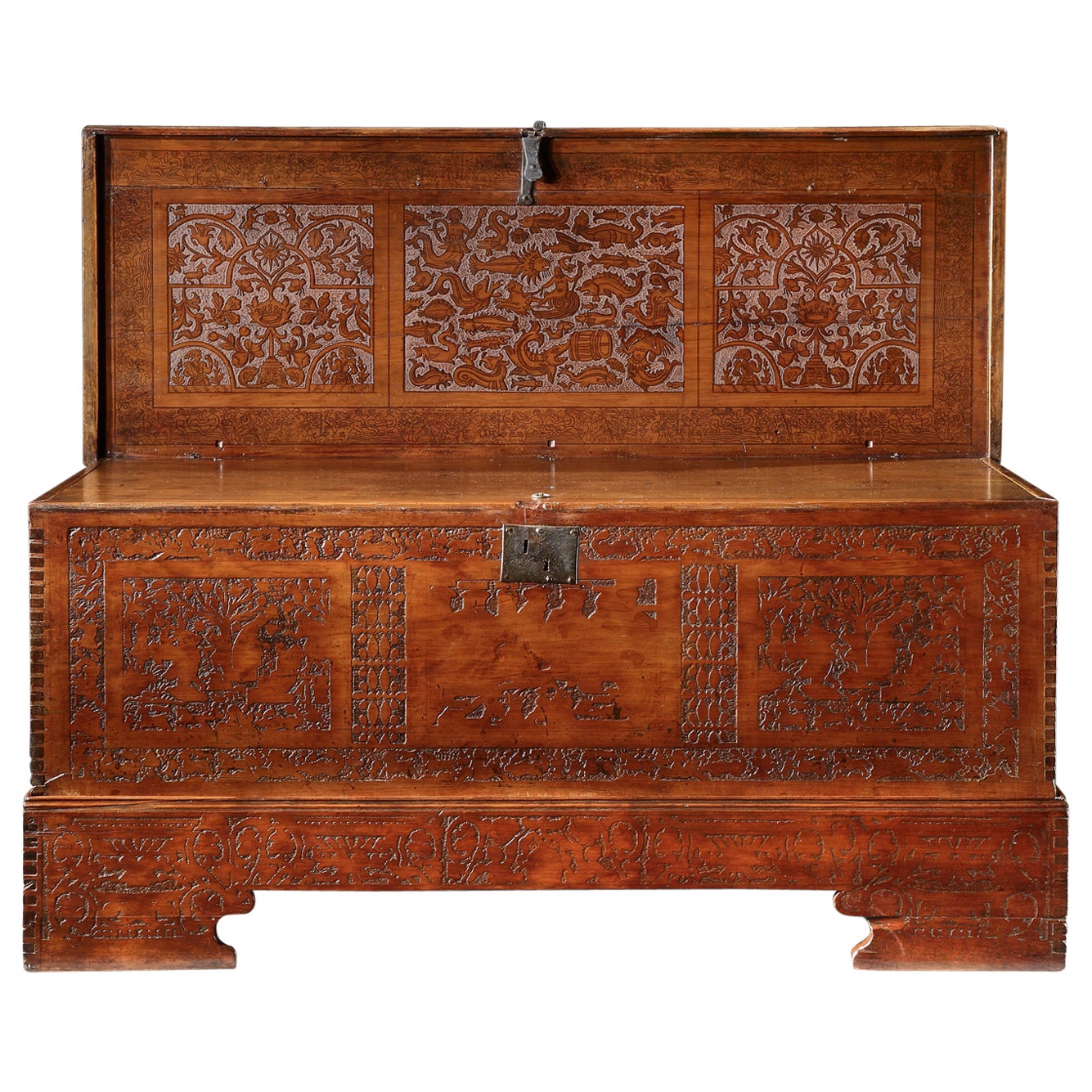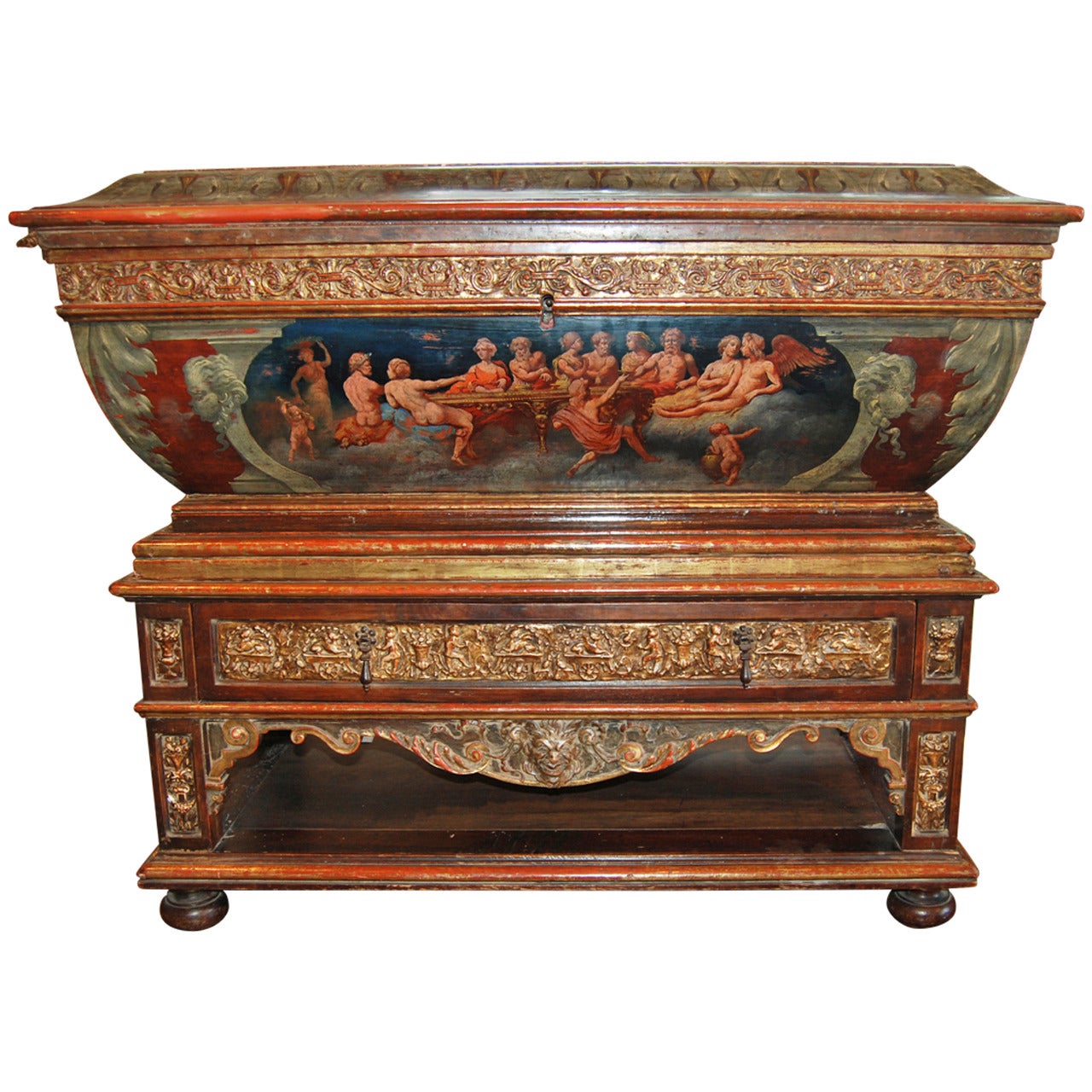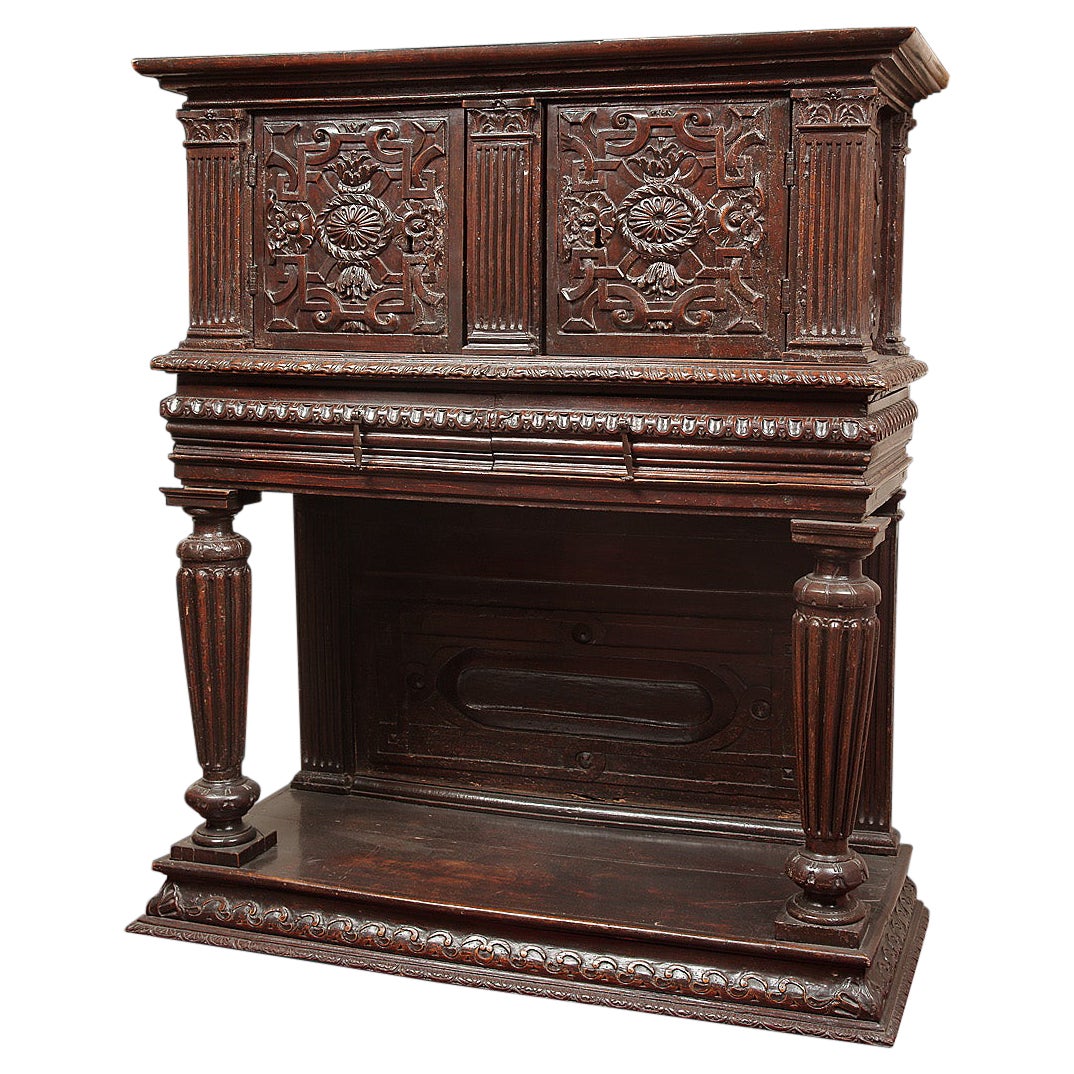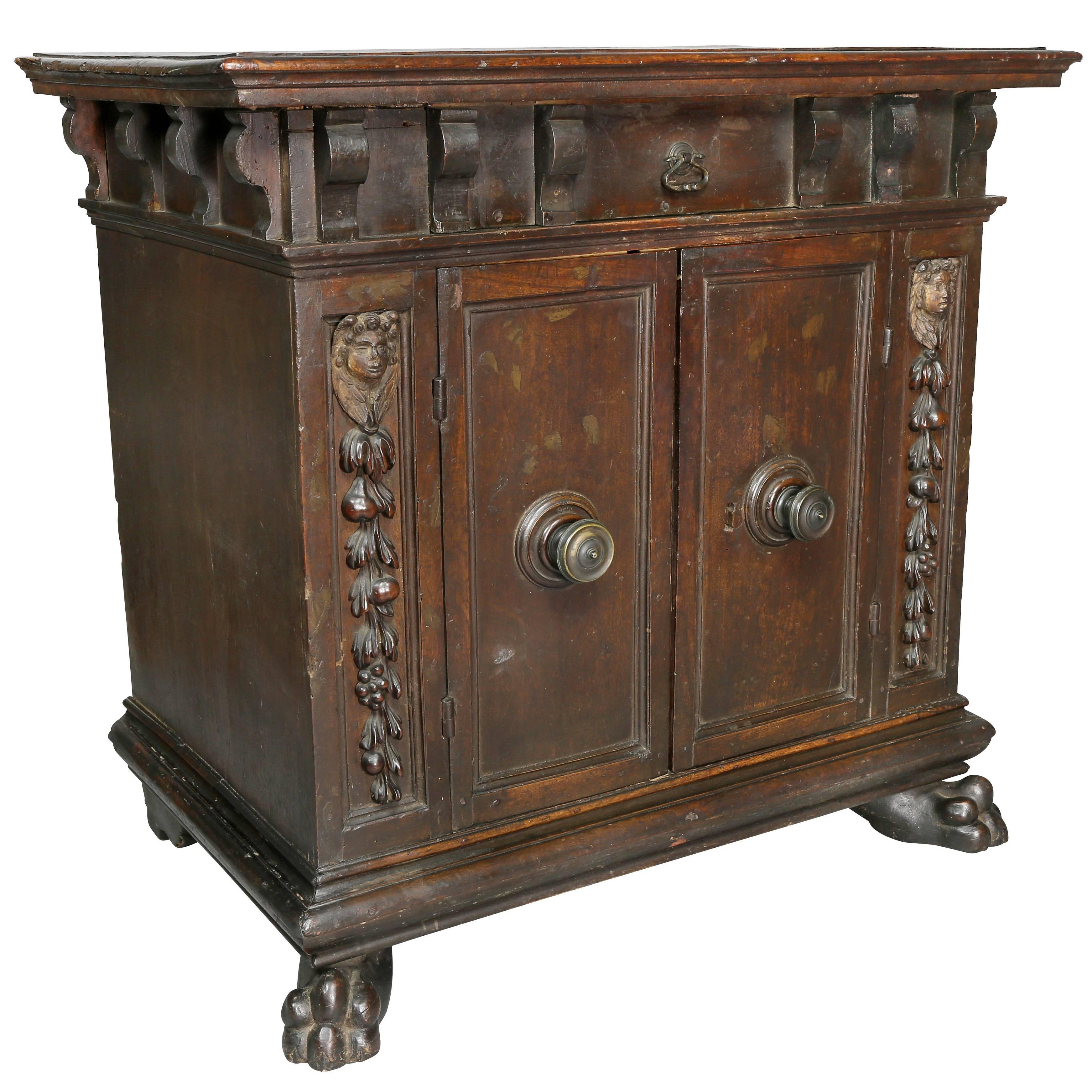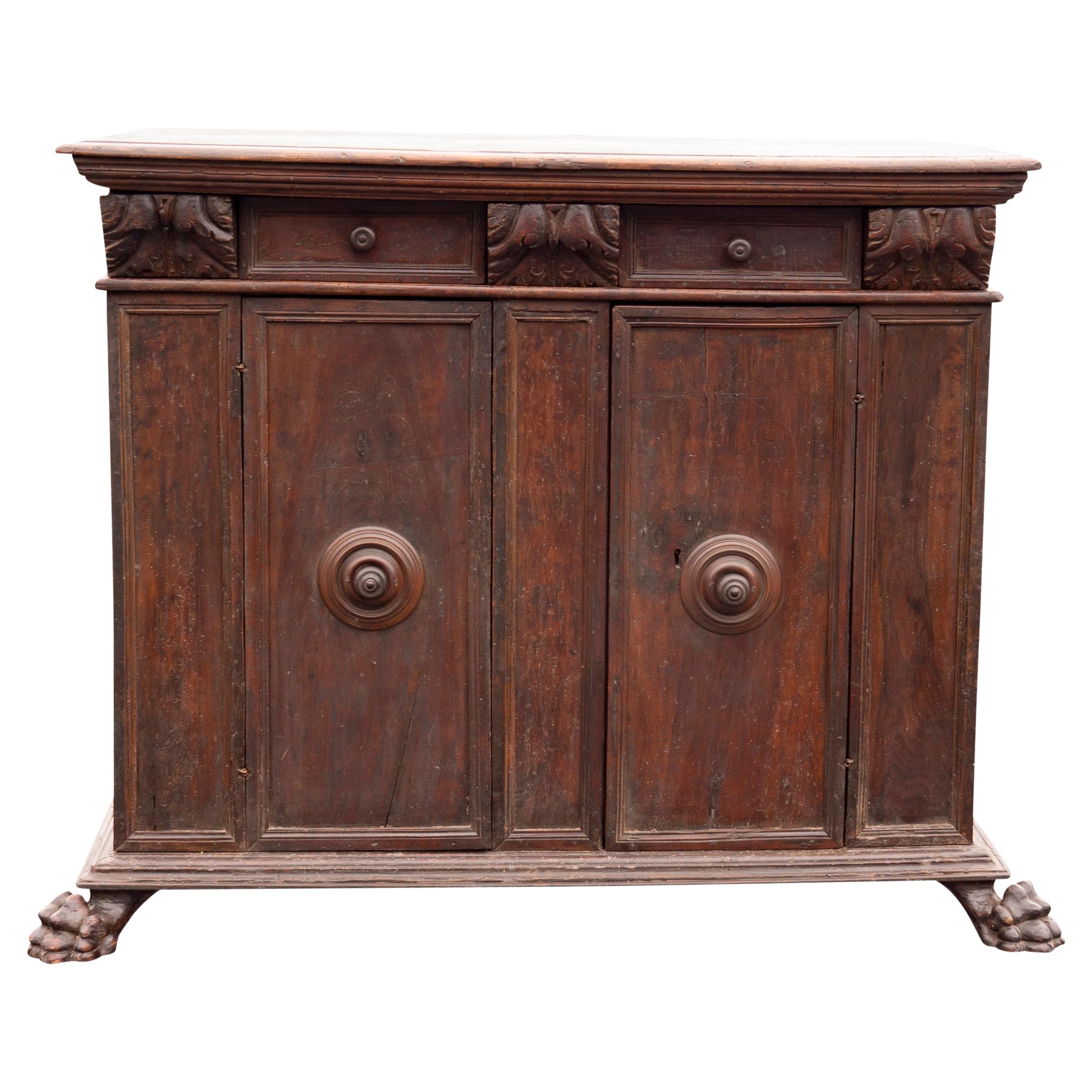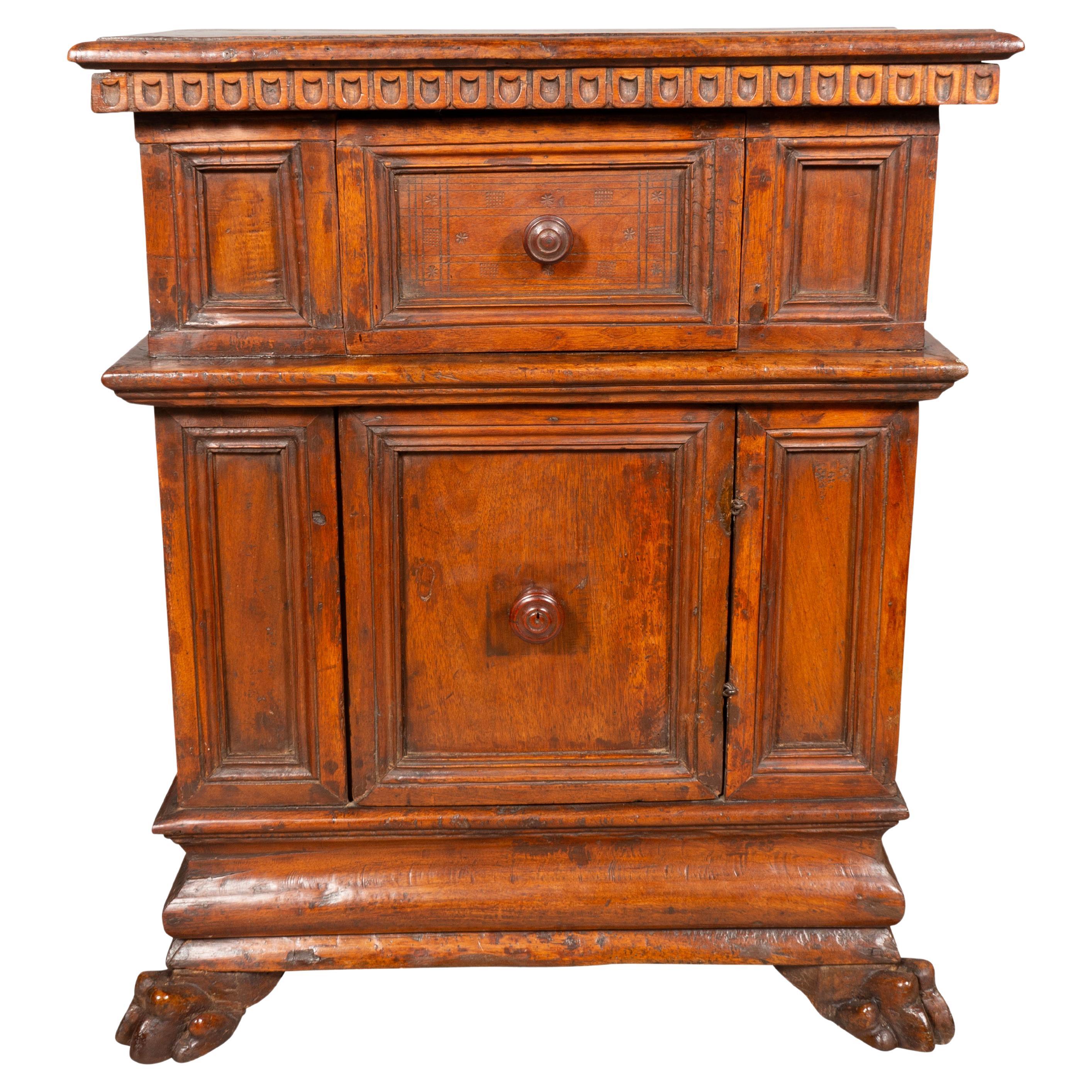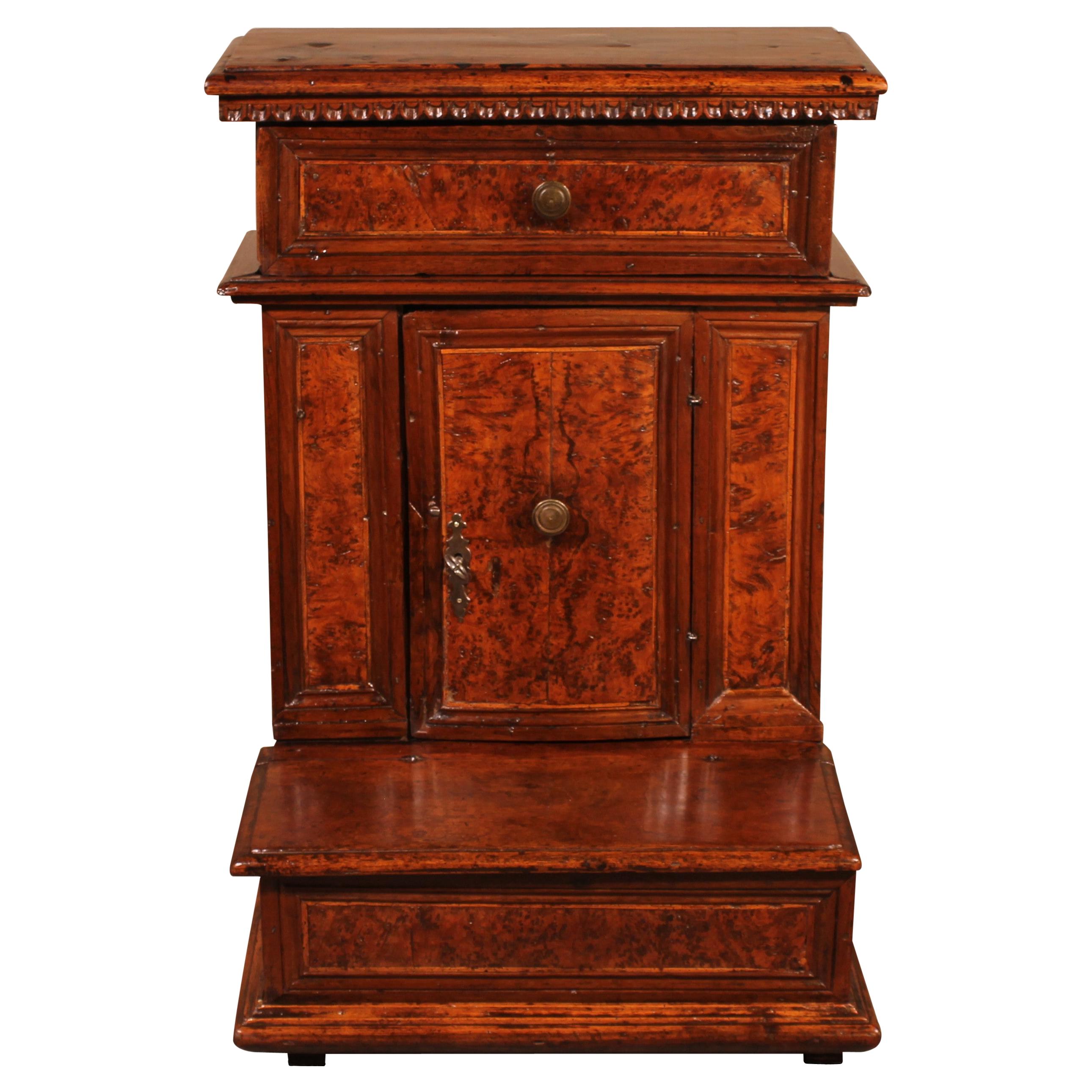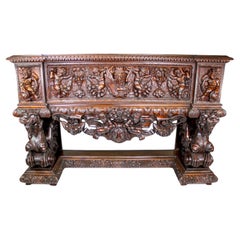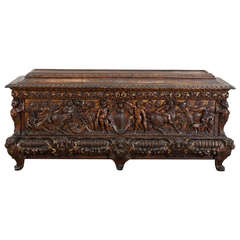
Walnut Cassone
View Similar Items
1 of 6
Walnut Cassone
About the Item
- Dimensions:Height: 31.5 in (80 cm)Width: 23.23 in (59 cm)Depth: 72.84 in (185 cm)
- Style:Renaissance (In the Style Of)
- Materials and Techniques:
- Place of Origin:
- Period:
- Date of Manufacture:1790
- Condition:Minor structural damages. restored.
- Seller Location:Stockholm, SE
- Reference Number:1stDibs: LU102821156250
You May Also Like
- Cassone, 17th Century, Italian, Baroque, Vernacular, Walnut, Carved, HeartsLocated in BUNGAY, SUFFOLKThis handsome cassone has ornament with romantic associations and was most likely a marriage chest. It is a good example of the Italian vernacular, simple in a sophisticated manner. ...Category
Antique Late 17th Century Italian Baroque Blanket Chests
MaterialsWalnut
- Cassone Venetian 16thc Renaissance Cedar Original Stand Neptune Armorial UnicornLocated in BUNGAY, SUFFOLKA large, museum-quality, late-16th century, cedar, Venetian, cassone on its original stand ; the sea creature ornament probably drawn from De la Cosmographie Universelle, livre III, engraving 1550-1568 • This is the only, known, cassone of this type retaining its original stand. • The collection in Italy that it originally came from was a palazzo that it had reputedly been in for generations of the same family and this most likely why the stand has survived. • The decoration is very unusual, and delightful in the array of sea creatures depicted. The connection of the region with the sea is very strong. • The inner lid is very practical and can be used for display or serving. The interior offers masses of storage space which is particularly suitable for textiles being cedar which repels moths. • The cassone is a beautiful, rich colour and has developed a lustrous patina. • The cassone is Illustrated & discussed in discussed in ‘Woods in British Furniture Making’, (Bowett) c13 Provenance: Private collection, Mayorca. Private collection, Italy Related to: Cassone in V&A collection, no 4886-1858 Width 177 cm., 70 in., Height 87 cm., 34 ½ in. Depth 68 cm. 26 ½ in. With lid open 155 cm., 61 in “Late 16th and 17th century, London inventories confirm that cypress wood chests were relatively common in prosperous households. In 1598 there was a cypress chest in the hall of John Mason, a vintner, valued at 50 shillings. It was the most expensive piece of furniture in the house. Similarly there was a ‘fair cypress chest’ in the great chamber of Adrian Moore, haberdasher, in 1618, and a cypress chest worth £ 9 in the hall of Thomas Willis, a clotherworker in 1630. The chests were sometimes described as ‘great’ or ‘small’ but not otherwise described – presumably they were familiar to the compilers of the inventories. They were placed in halls, chambers and parlours, places where they would have been on prominent view. It is noteworthy that only the chests were imported and not, apparently, the wood. “ (p282, Cypress, Woods in British Furniture making) The decoration is very unusual, and delightful in the array of sea creatures depicted. The connection of the region with the sea is very strong. I have never seen one of these chests on its original stand. The collection in Italy that it came from was a palazzo that it had reputedly been in for generations of the same family and this most likely why the stand has survived. In practical terms, the stand makes the chest a comfortable height to use. The exterior of the chest is a beautiful, mellow colour and has developed a lustrous patina. The top comprises three planks faced with a shallow, cleated, moulded edge nailed on. The front retains its original hasp and lockplate and, as is commonly found, the lock has been removed but, unusually the original ring hinges have survived. The top opens to reveal an inner lid with ring hinges and a brass ring, revealing a large open storage compartment below, the bottom lined with an old fabric. The underside of the lid retains its original penwork and pierced decoration. The central panel depicts sea creatures, sharks, flatfish, monster fish, sea horses, Neptune and mermaids, probably drawn from De la Cosmographie Universelle, livre III, engraving 1550-1568. The panels either side depicting a crown, the sun and unicorns amongst stylised floral sprays. The surrounding naive penwork border features repeats of three naked ladies in the sea, a man wearing an animal mask with two dogs in a forest and a huntsman with two dogs. The floor of the inside of the cassone is upholstered in an 18th century red and yellow striped woven textile the colours of the Catalan flag. The front is decorated with pierced, silhouettes of beasts, trees and figures. The sides are plain with iron carrying handles. On its original stand, with similar decoration, and bearing a cartouche which would have been decorated with the arms of its original owner. Italian, last quarter of the 16th century. Condition Report : Old repair to bottom left moulding of top. Some hairline cracks to top. The hasp, lockplate and ring hinges are original, the lock has been removed. Handles probably 18th century. The inner lid was probably added in the 18th century and supporting mechanism in the 19th century. Exceptional original, lustrous colour and patina. Measures: Width 177 cm. 70 in., height 87 cm. 34 ½ in., depth 68 cm. 26 ½ in. The cassone was the principal piece of furniture in 16th century, Italy. These chests were made as bridal gifts for nobles and aristocrats from cedar specifically for storing their much prized and valued hangings, clothing and linens, as the wood repels moths and the sweet fragrance delicately scents fabrics. Consquently the cassone, as in this example might be decorated with the family coat of arms or with depictions of virtue and edifying episodes from the Bible. A young woman could not be allowed to enter marriage without some instruction. Later, many cassoni were taken apart so that the decorated front panel could be hung as a painting. The stand of this cassone has a cartouche that would have contained a painted coat of arms in the centre which shows that it was conceived for a noble family. Such cypress or cedar chests, incised in bas relief and pyrographically engraved, have long been associated with Venice and typically have a naïve decoration on the exterior. Literature: The 'cypress chests' containing 'arras, counterpoints, costely apparel, tents, and canopies, fine linen, Turkey cushions...Category
Antique 16th Century Italian Renaissance Cabinets
MaterialsCedar
- Italian 19th Century Carved Walnut Cassone Chest with Putti and Winged DragonsLocated in Los Angeles, CAA Fine and Large Italian Florentine 19th Century Baroque Revival Style Carved Walnut Figural Cassone Chest on Stand. The ornately carved drop-front cassone with an allegorical in-rel...Category
Antique Late 19th Century Italian Baroque Revival Cabinets
MaterialsWalnut
- 15th Century Italian Cassone ChestLocated in Saint-Ouen, FRThis chest stands on a high moulded plinth. It was made from a fine walnut wood and shows good traces of polychromy and gold leaf decor. The facade’s two panels, once colourful, ...Category
Antique 15th Century and Earlier Italian Gothic Blanket Chests
MaterialsWalnut
- Italian Renaissance Walnut CassoneLocated in Essex, MAWith flat hinged top opening to a open compartment. The curved case carved with a crest and figures and various designs. Bracket feet with trefoil form apron. Sold in a Sothebys Euro...Category
Antique Early 1600s Italian Renaissance Blanket Chests
MaterialsWalnut
- Royal Venetian 18th Century Trousseau CassoneLocated in New Orleans, LARoyal trousseau cassone. Provenance-Regina of Saxe. Richly painted with scenes of puttis, corbeilles de fruits and and mythologiques.Category
Antique 18th Century Italian Cabinets
Recently Viewed
View AllMore Ways To Browse
Italian Cassone
Carved Cassone
Walnut Cassone
18th Century Cassone
18th Century Italian Cassone
Renaissance Cassone
Kitchen Cabinets Used Furniture
Storage Shelves Used
Used Kitchen Cabinets
Used Glass Cases
Used Glass Case
Used Storage Shelves
Side Cabinets
Furniture Storage Case Piece
Beautiful Cabinet
Two Doors
Cabinet With Shelves
Case Good
